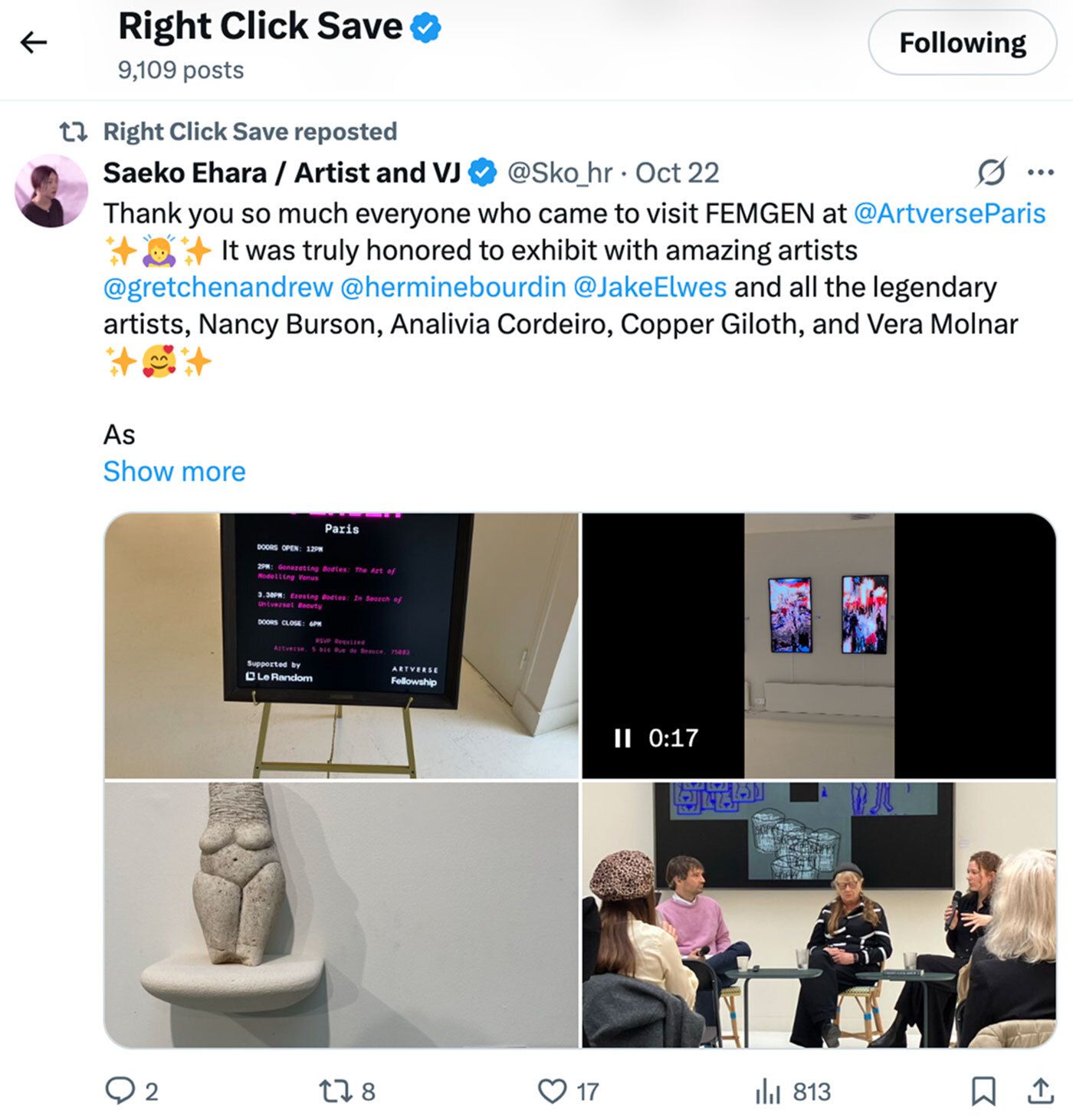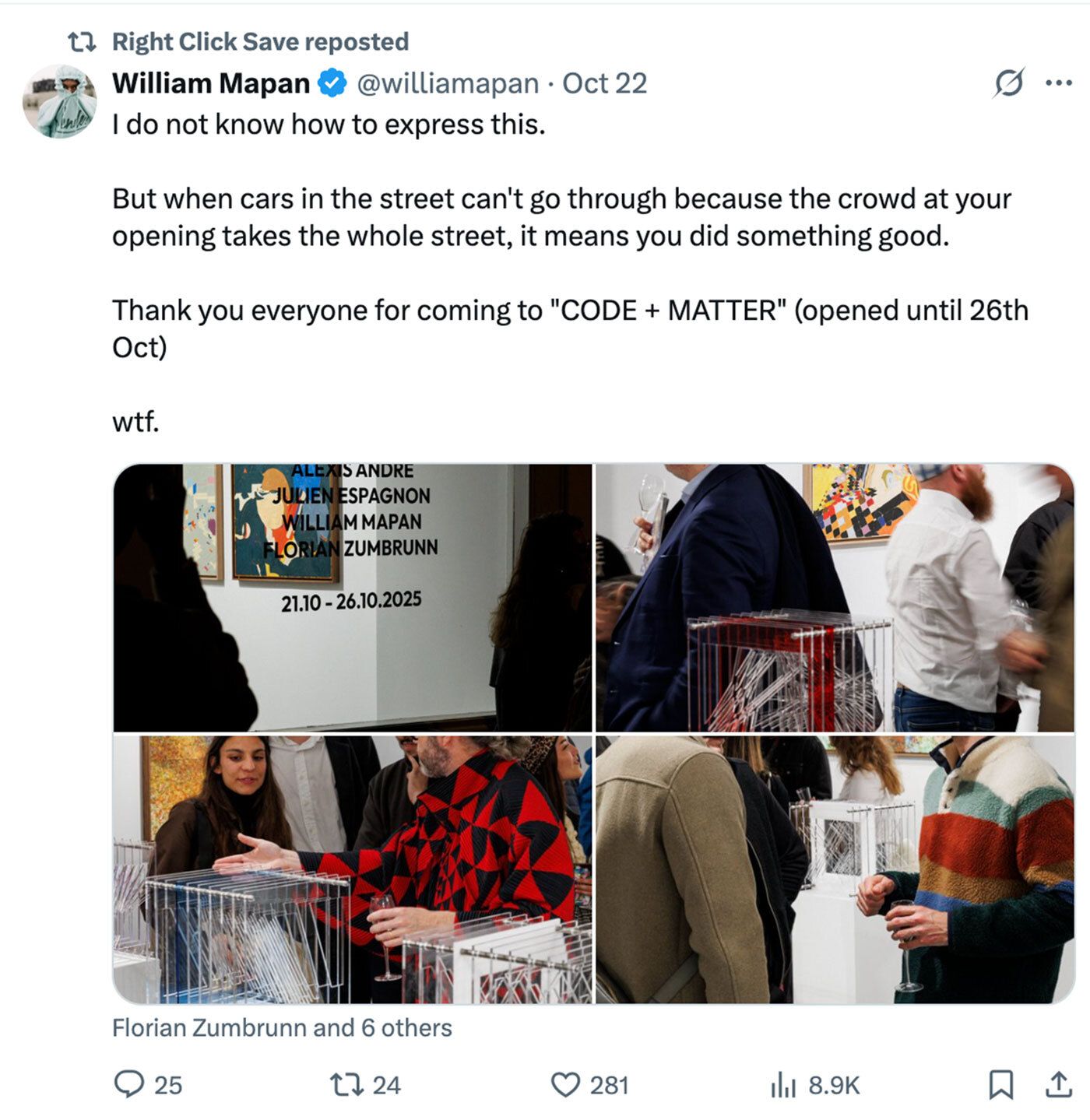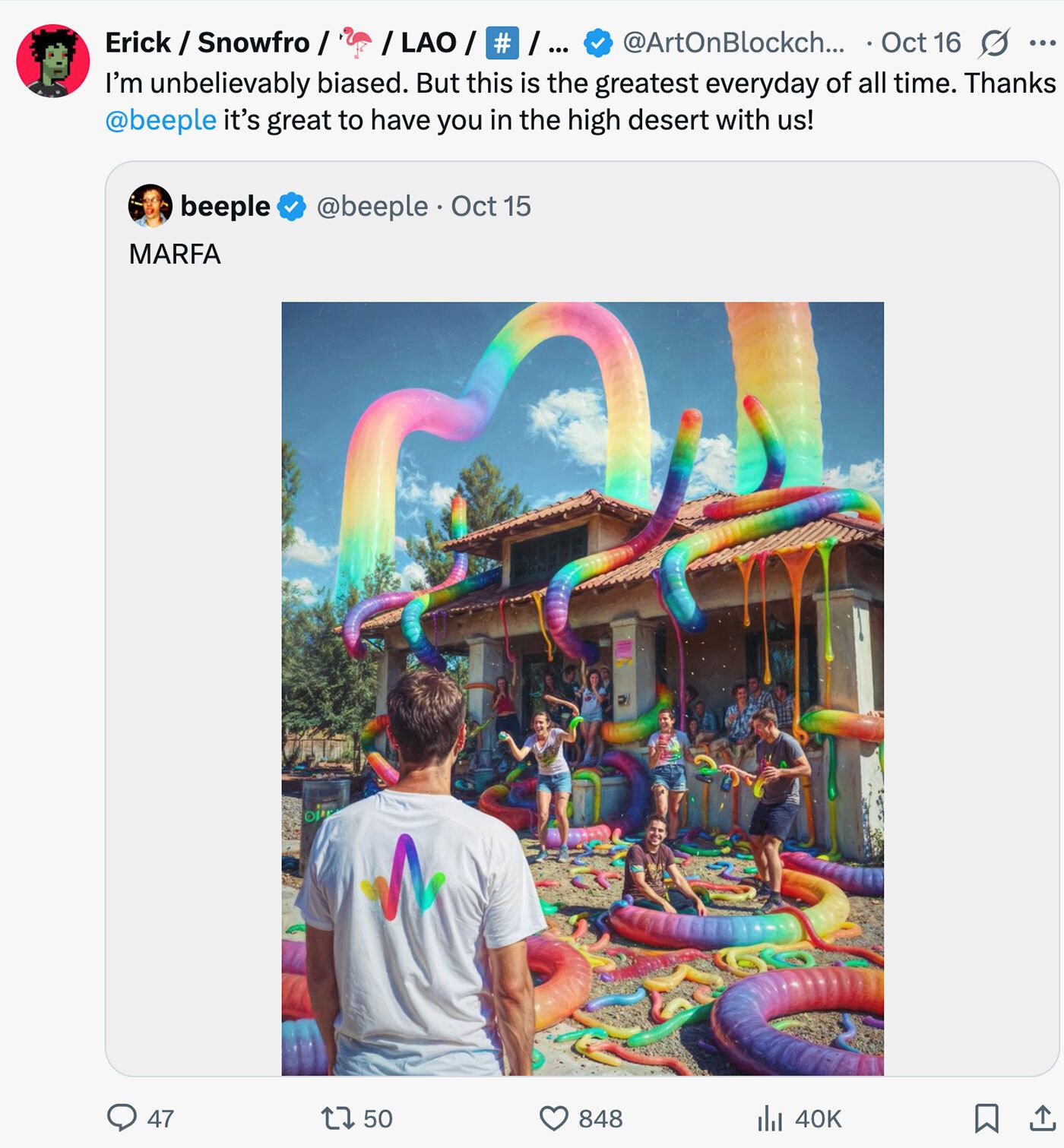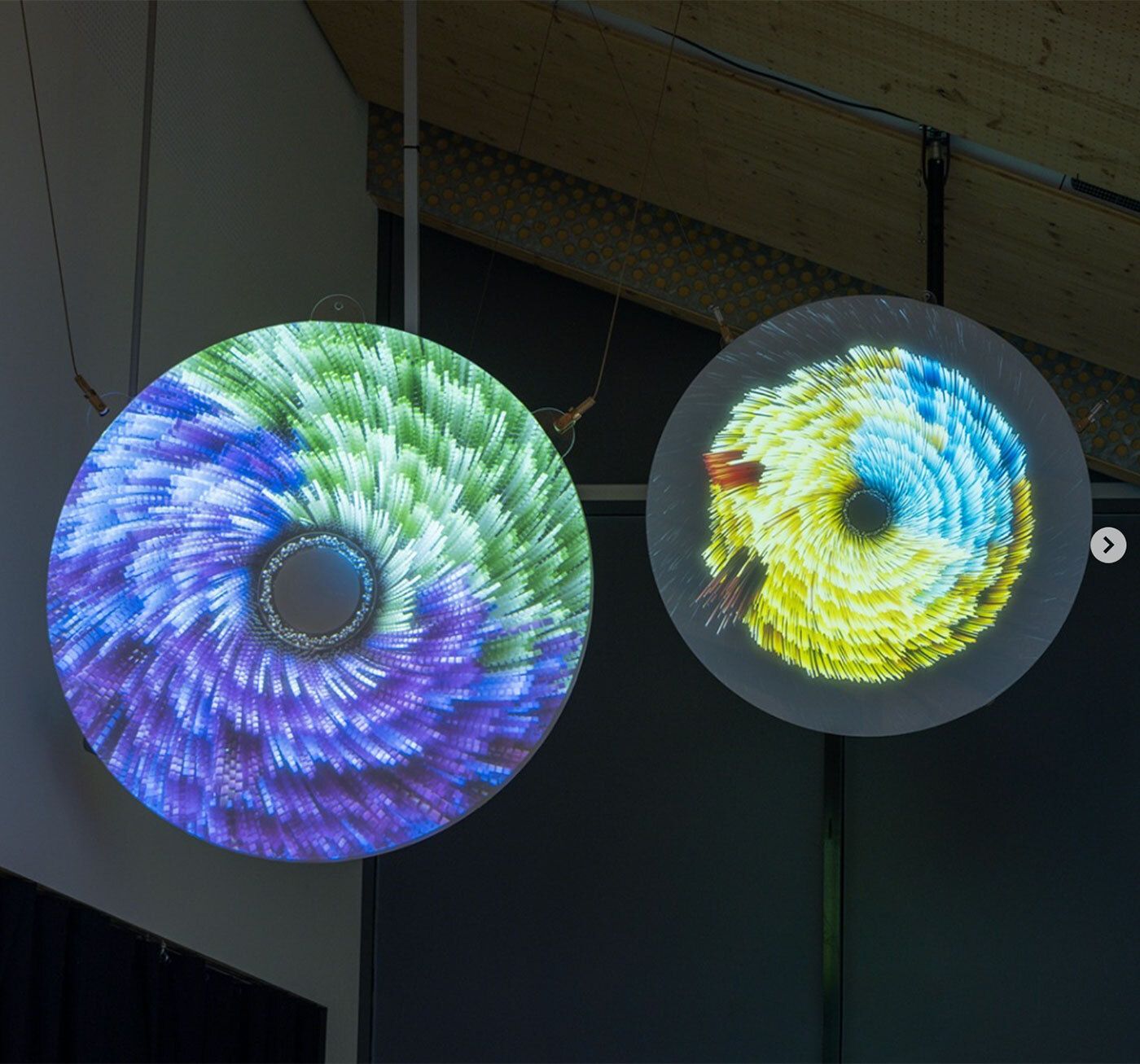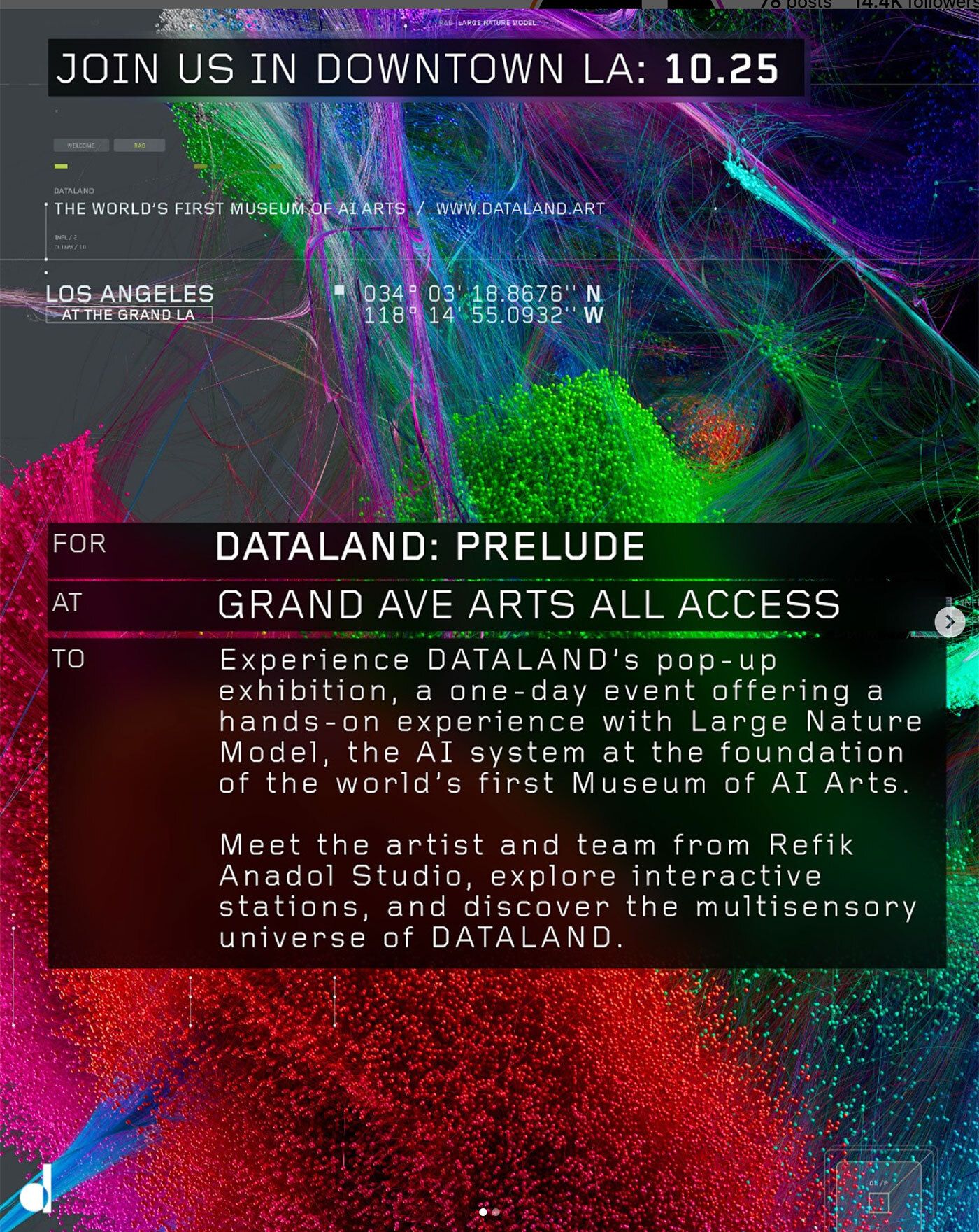The power of connection
A spirited debate about cultural relevance in digital art swept through X this week, reminding us that the conversation around which artists best express internet culture—and how we define their influence—remains as contentious as ever.
Thankfully, the week brought plenty of reasons for celebration. FEMGEN Paris showcased groundbreaking work by—and rich conversations between—an intergenerational group of women and non-binary artists. While Art Blocks Marfa Weekend felt like something rare and special—a desert pilgrimage for generative artists and collectors.
As always, the most exciting moments happen when we connect, gather, and question.
— Danielle King, Head of Community at Right Click Save

Features
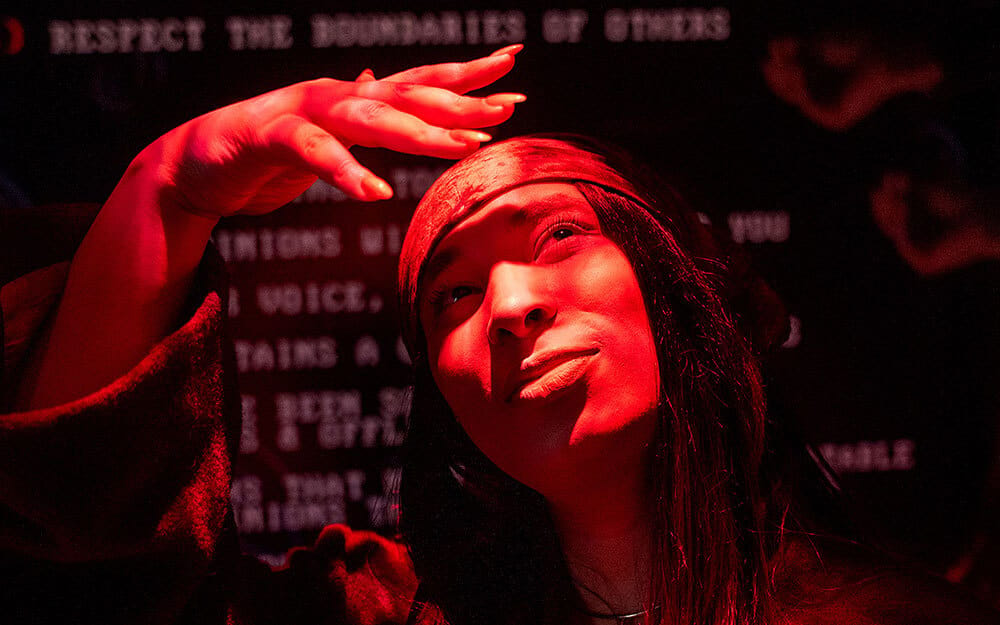
Danielle Brathwaite-Shirley. Photography by Talie Rose Eigeland. Courtesy of the artist and Serpentine Galleries
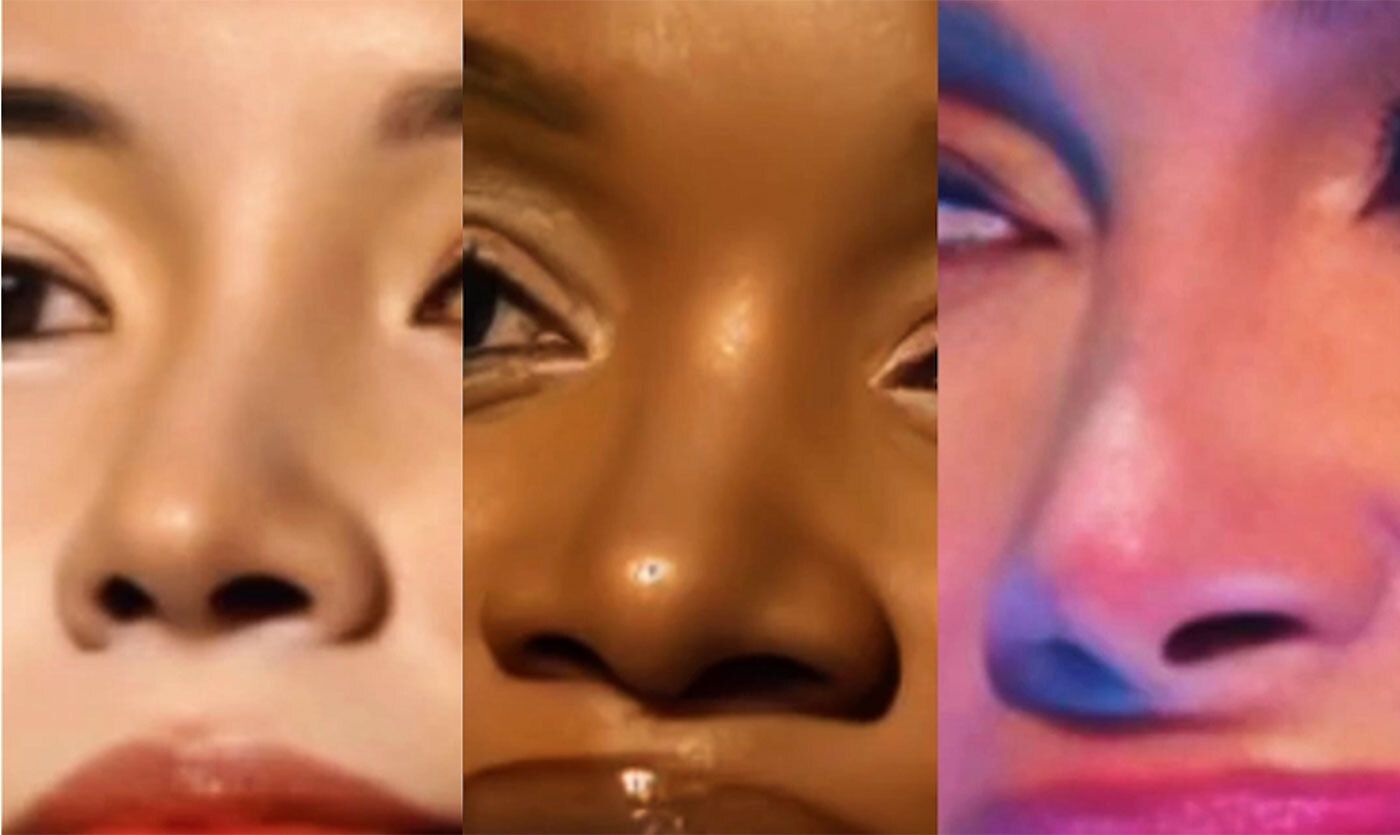
Gretchen Andrew, Facetune Portraits (detail), 2025. Courtesy of the artist
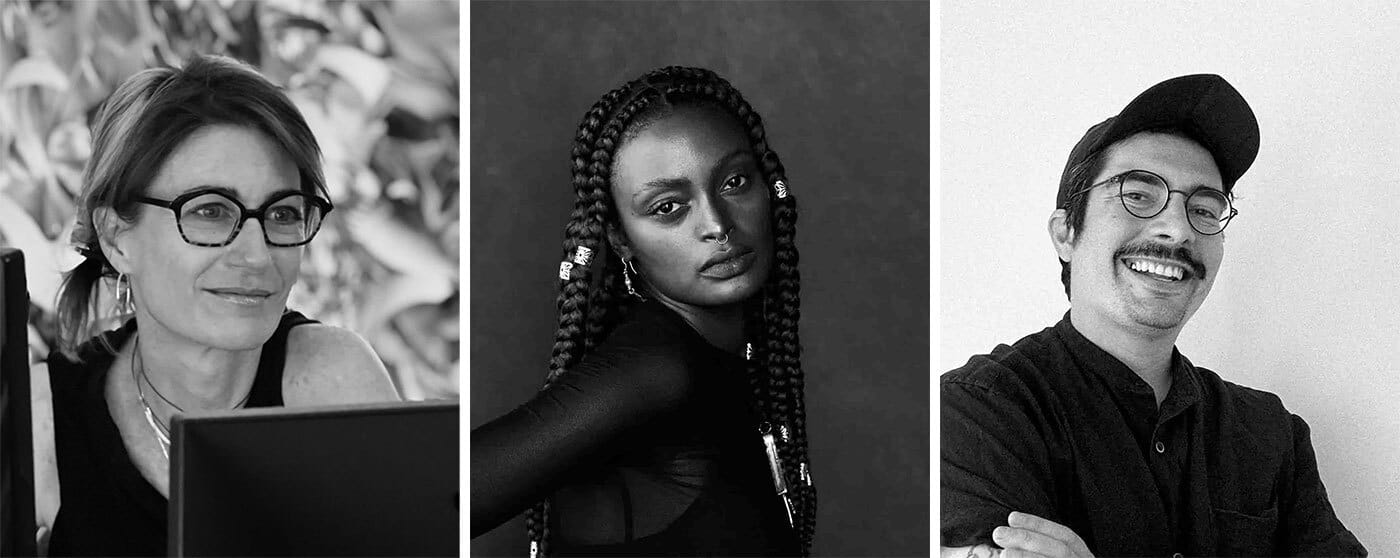
Nancy Baker Cahill, Kiya Tadele (creative director of Yatreda), and Simon Fernandes. Courtesy of the artists

Trending
The future is hybrid at Paris Art Week
A packed Paris Art Week found both Web3 leaders and traditional collectors acknowledging the hybrid future of the art world—a story that Right Click Save has been documenting for some time. On a day when one of FEMGEN’s participating artists, Hermine Bourdin, sold a carved sculpture based on AI trained on Palaeolithic Venuses, half of Paris seemed to turn out for “CODE + MATTER” at 17 Rue Chapon. Curated by Dominique Moulon and Grégoire Prangé and comprising physical outputs of algorithms by four artists: Alexis André, Julien Espagnon, William Mapan, and Florian Zumbrunn, the show felt like hard evidence that the mass adoption of digital art depends on its physical display. Just as Espagnon’s boldly colored paintings beguiled viewers with the tangible marks of a machine, so Saeko Ehara’s screen-based series “Body Without Presence” at FEMGEN rendered digital experience painterly.
Hosted both IRL at Artverse, Paris, and URL at Fellowship, FEMGEN’s pair of curated conversations reinforced digital art as an intergenerational conversation, exemplified by the discussion between Hermine Bourdin and pioneer of computer-video art, Copper Giloth, moderated by Peter Bauman of Le Random. This year’s edition of the annual event, which was founded by Micol Apruzzese and Editor-in-Chief of Right Click Save, Alex Estorick, highlighted the ongoing damage wrought by attempts to standardize beauty. As artist Gretchen Andrew made clear in her conversation with Saeko Ehara and curator Marlène Corbun, the accelerating feedback loop between physical and digital experience has consequences well beyond art: “With new forms of cosmetic surgery we’re compressing three dimensions into 2D space.”
All human life on show at Art Blocks Marfa Weekend
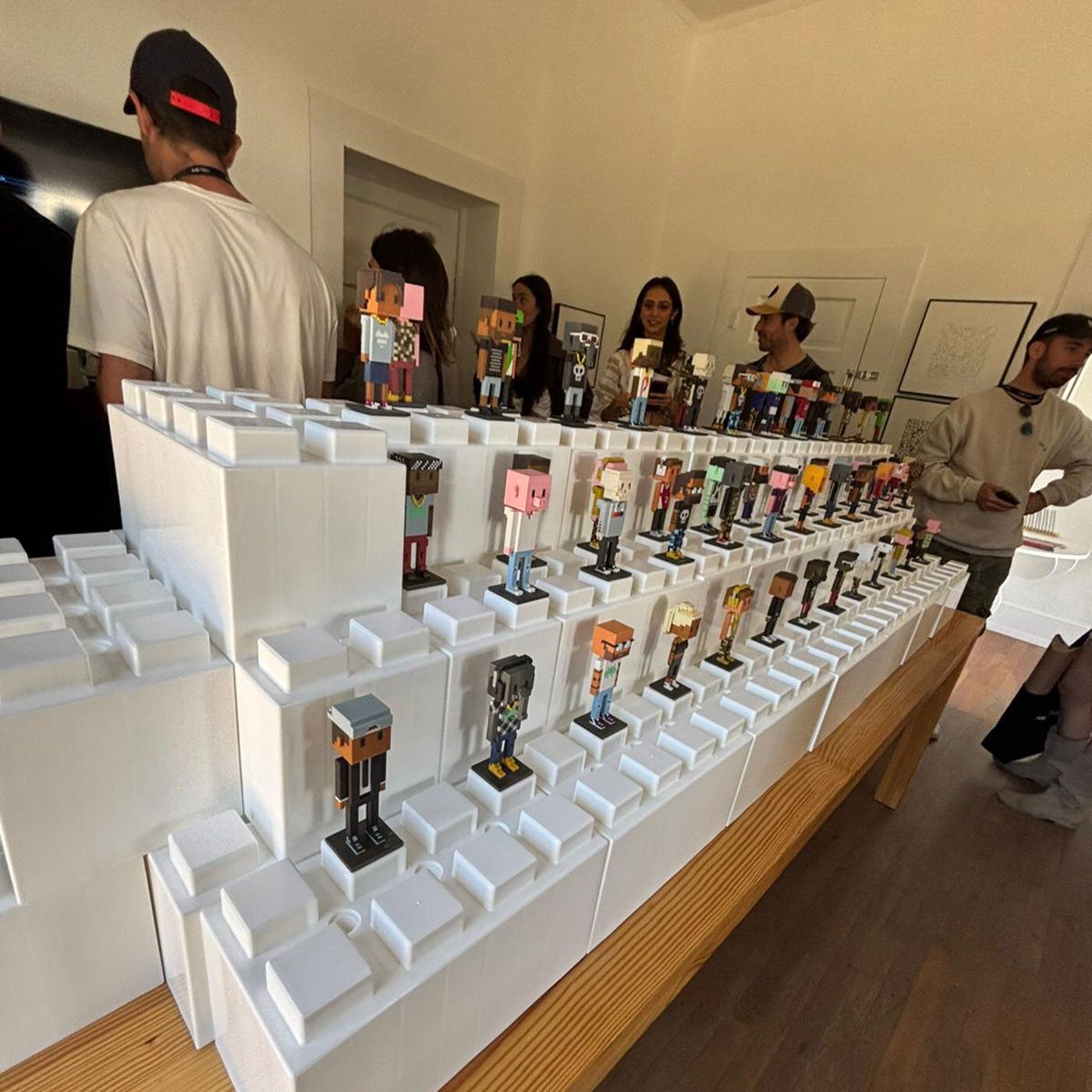
The first ever physical Meebits exhibition during Art Blocks Marfa Weekend. Photography by Joana Kawahara-Lino

Forthcoming
“Lighten Up! On Biology and Time”, a new exhibition at MIT Museum, in Cambridge, Massachusetts (October 28, 2025 to August 2026), examines how cycles of light and dark shape lives, in the context of circadian rhythms and dreams. The show features the work of 15 artists and 18 installations—including works by Carsten Höller, Adam Haar Horowitz, Kirell Benzi, Seth Riskin, James Carpenter, Liliane Lijn, and Helga Schmid.
The exhibition is presented in partnership with EPFL in Lausanne, Switzerland, curated by Anna Wirz-Justice, Marilyne Andersen, Sarah Kenderdine, and Giulia Bini. “"How does the rhythm of day and night affect our bodies and those of other living creatures? Why do we sleep? Why do we dream?” Michael John Gorman, The Mark R. Epstein Director, MIT Museum, said in a statement. “By considering the nature of biological time, the exhibition Lighten Up! brings artists, architects and chronobiologists together to explore the nature of circadian rhythms in a series of artistic experiments and installations posing fundamental questions about the rhythms that define our lives.”
Refik Anadol Studio has announced that the DATALAND Museum of AI Arts, Los Angeles, is scheduled to open in Spring 2026. As a one-day prelude to the launch, in the Frank Gehry-designed Grand in Grand Avenue Arts, Downtown LA, interested Angelenos can attend a pop-up exhibition on October 25. The day includes a hands-on experience with the Large Nature Model—the AI system that is the foundation of DATALAND—and the chance to meet Anadol and his studio co-founder Efsun Erkılıç.

Loving
Chris Dorland on Christopher Kulendran Thomas at Gagosian, David McKenzie’s film Relay, and Stan Allen’s “Field Conditions”
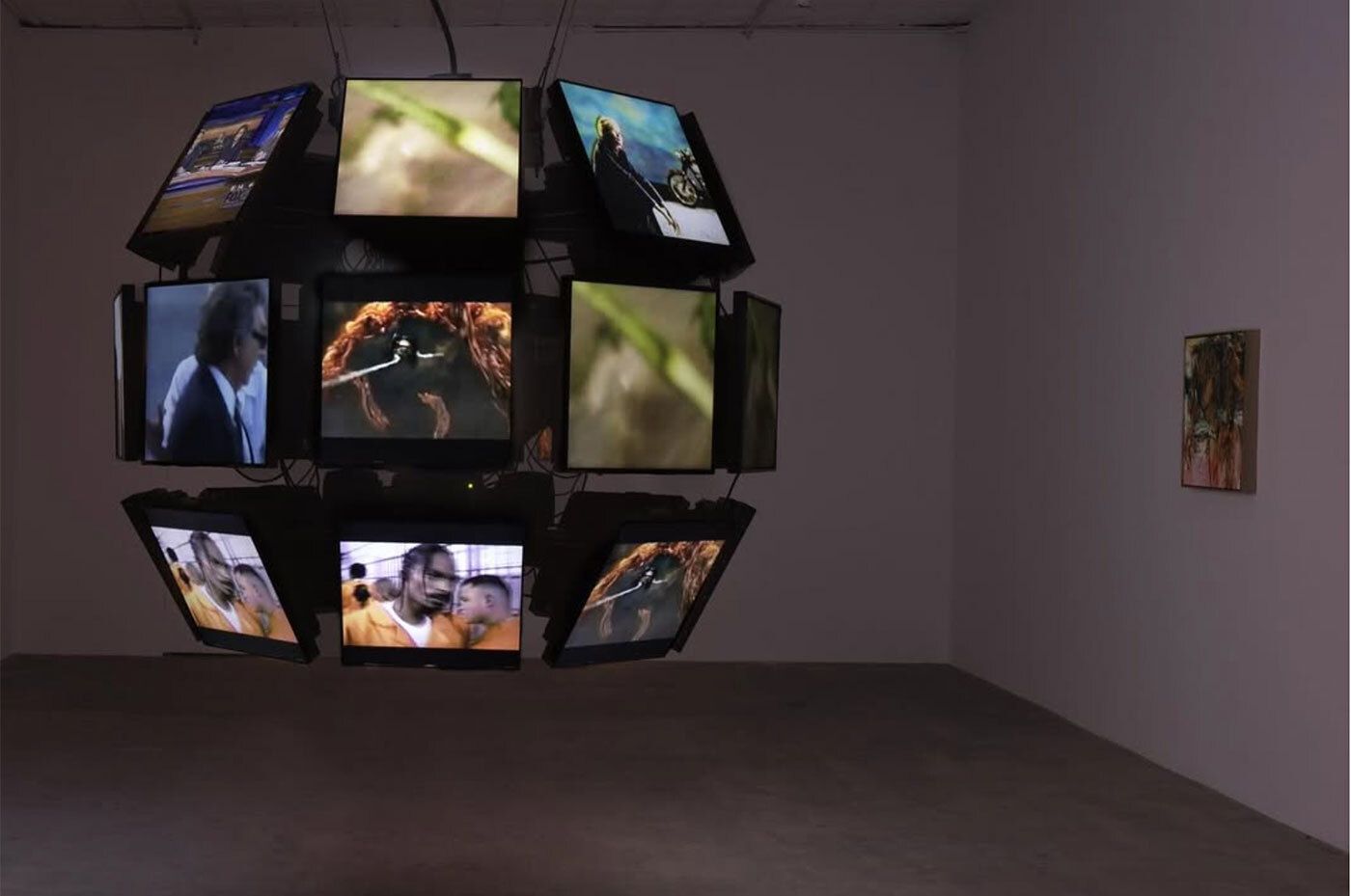
Christoper Kulendran Thomas’s “Peace Core” at Gagosian, at Park & 75, New York. Via instagram.com/gagosian/
It’s not often that Gagosian presents politically and technologically oriented work, but Christopher Kulendran Thomas’s powerful kinetic video sculpture and AI paintings, “Peace Core”, made for a striking installation recently in New York. Training an AI on pre-9/11 American TV footage, the Medusa-like screen-headed polyhedron felt like a nostalgic elegy for the American empire—and for Gretchen Bender’s 1987 masterpiece Total Recall.
My cousin recently turned me onto David McKenzie’s Relay (2024), an anti-tech tech thriller that I missed during its brief theatrical run but immediately streamed once available. It’s a taut New York neo-noir about obsolete technologies, shot with the precision and paranoia of the 1970s greats—a love letter to the city and its circuitry.
While not new, I just discovered the architect Stan Allen’s remarkably prescient 1996 essay “Field Conditions”, which anticipates our present shift from discrete objects to dynamic systems, where meaning arises through networks, patterns, and relations rather than singular forms.
— Chris Dorland is a New York-based artist and co-founder of the gallery Magenta Plains. His work explores the aesthetics of technology, surveillance, and digital decay. He has work on view in Lyles & King’s 10-year anniversary exhibition in New York (until November 9), with upcoming a solo exhibition titled “Chrome Shelter” at the Museum gegenstandsfreier Kunst in Otterndorf, Germany.


